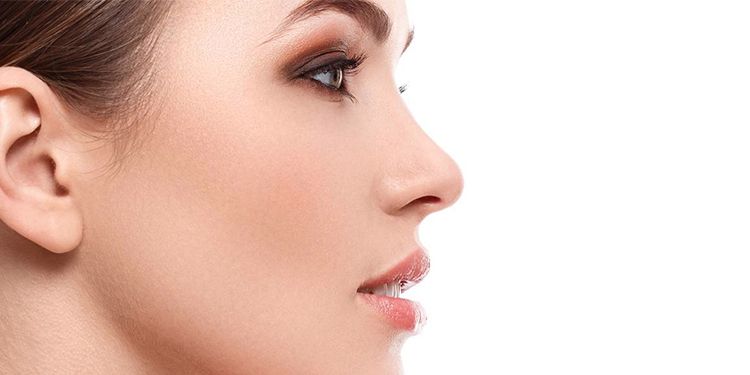Closed rhinoplasty, also known as endonasal rhinoplasty, is a popular choice for individuals seeking a subtle transformation of their nose. Unlike more invasive forms of rhinoplasty, this technique offers the ability to make minor but impactful changes without leaving visible scars or requiring a prolonged recovery period. Whether you are looking to refine the shape of your nasal tip, smooth out a dorsal hump, or correct slight asymmetry, Closed Rhinoplasty In Dubai provides a path to achieve a natural and harmonious look with minimal disruption.
What Is Closed Rhinoplasty?
Closed rhinoplasty is a surgical procedure performed entirely through internal incisions made within the nostrils. This allows the surgeon to access the nasal bones and cartilage without creating any external scars, which is one of the primary advantages of this technique. It’s typically recommended for patients who require minor to moderate adjustments, whether for aesthetic or functional reasons.
The internal approach not only eliminates visible scarring but also results in less postoperative swelling and a faster recovery, making it a preferred option for those seeking a more subtle and refined outcome.

Why Choose Closed Rhinoplasty for a Subtle Change?
For patients who desire subtle, natural-looking changes rather than dramatic transformations, closed rhinoplasty is an excellent choice. Here's why:
1. Discreet Results
Closed rhinoplasty is designed for individuals who want to make slight adjustments to the appearance of their nose without significantly altering its overall character. By maintaining the natural structure of the nose and focusing on minimal modifications, patients can enjoy enhanced results that don’t look overly “surgical” or obvious. Whether you’re looking to refine the nasal tip or reduce a small hump on the bridge, closed rhinoplasty achieves improvements that enhance your overall facial harmony without drawing attention to the fact that you’ve had surgery.
2. No Visible Scars
Since the entire surgery is performed through incisions made inside the nostrils, closed rhinoplasty leaves no external scars. This is particularly appealing for patients who want to avoid any visible signs of surgery. The lack of scarring means that your nose’s transformation is completely discreet, and no one will be able to tell you’ve undergone a procedure just by looking at you.
3. Faster Recovery
Closed rhinoplasty is less invasive than open rhinoplasty, meaning there is less tissue manipulation and disruption. As a result, patients typically experience less bruising, swelling, and discomfort post-surgery. Recovery time is also shorter, allowing individuals to return to their daily lives more quickly. This is a major benefit for people who don’t want to take an extended break from work or social activities.
4. Preserves Nasal Structure Integrity
With closed rhinoplasty, the nasal cartilage and bone are carefully reshaped without the need for major reconstruction. This means that the overall structural integrity of the nose is preserved, making it a good option for patients who want to keep the fundamental shape of their nose while making minor refinements. Whether you’re looking to correct a bump, narrow the bridge, or refine the tip, the procedure allows for subtle but effective changes that maintain the essence of your natural nose.
5. Ideal for Minor Adjustments
Closed rhinoplasty is particularly effective for those who need only minor adjustments. Common issues addressed through this procedure include:
- Smoothing out a small bump on the nasal bridge.
- Refining the nasal tip to make it appear more defined or less bulbous.
- Correcting slight asymmetry in the nose’s shape or alignment.
- Narrowing the bridge of the nose for a more streamlined appearance.
For these types of subtle changes, closed rhinoplasty offers excellent results without the need for more extensive surgical intervention.
How Closed Rhinoplasty Is Performed
Closed rhinoplasty is performed under general anesthesia or local anesthesia with sedation, depending on the extent of the procedure and the surgeon’s recommendations. During the surgery:
- Internal Incisions: The surgeon makes small incisions inside the nostrils, which allows them access to the nasal cartilage and bone.
- Reshaping: The surgeon then reshapes or removes portions of the cartilage and bone as needed to achieve the desired aesthetic result. This may involve smoothing out bumps, refining the nasal tip, or correcting any functional issues like a deviated septum.
- Closing the Incisions: Once the reshaping is complete, the incisions inside the nostrils are closed with dissolvable sutures. There are no visible stitches or external incisions to manage post-surgery.
Recovery from Closed Rhinoplasty
Because closed rhinoplasty is less invasive, the recovery process is generally shorter and more comfortable compared to open rhinoplasty. Here’s what to expect during recovery:
- Initial Healing: In the first few days after surgery, there will be some swelling and bruising, particularly around the nose and under the eyes. However, since the incisions are internal, the swelling is usually less pronounced than with open rhinoplasty.
- Bruising and Swelling Reduction: Most patients find that the bruising starts to fade within a week, and the majority of the swelling subsides within a couple of weeks.
- Return to Normal Activities: Many patients can return to work and light activities within one to two weeks after surgery, though it’s recommended to avoid strenuous activities and exercise for a few weeks to allow for proper healing.
- Final Results: While initial results will be visible once the swelling goes down, the final outcome of the surgery may take several months to become fully apparent, as the nose continues to settle into its new shape.
Is Closed Rhinoplasty Right for You?
Closed rhinoplasty is ideal for individuals who want a subtle nose transformation without the downtime and visible scarring associated with open rhinoplasty. If you are looking to refine, rather than drastically change, the appearance of your nose, this minimally invasive technique may be the perfect solution. Additionally, if you have functional issues such as breathing difficulties due to a deviated septum, closed rhinoplasty can address both aesthetic and functional concerns at once.
However, it’s important to consult with a board-certified plastic surgeon who specializes in rhinoplasty to determine whether you are a good candidate for this technique. For more complex cases requiring significant structural changes, open rhinoplasty may be the better option.
Conclusion
Closed rhinoplasty offers a subtle yet impactful approach to nasal refinement, providing patients with natural-looking results and a quicker, more comfortable recovery. With no visible scars and the ability to make precise, delicate changes, it’s a great option for those looking to enhance their appearance without undergoing a dramatic transformation. Whether you’re seeking to smooth out a bump, refine the tip, or correct minor asymmetry, closed rhinoplasty can help you achieve a balanced and harmonious look that complements your facial features.





Comments